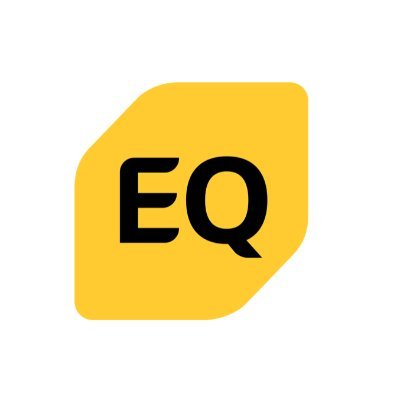These products may seem similar, because they all give you access to the value that’s tied up in your home. But they are not the same, and each should be considered carefully.
With home property values in Canada increasing at an astonishing rate—the national average sale price went up 25% between February 2020 and February 2021—homeowners across the country may be considering the various ways they can tap into their growing equity.
One obvious approach is to sell your home and downsize to a smaller property or rental, and pocket the proceeds of the sale.
Those who prefer to stay put, however, can borrow against the equity in their home in three different ways: take out or refinance a conventional mortgage, open a home equity line of credit (HELOC), or get a reverse mortgage.
While these products may seem similar at first blush—they all give you access to the value that’s tied up in your home—they are not the same, and each should be considered carefully. How can you tell which one is right for you? We’ve put together a summary of key points in a handy chart below, then go on to explain the key differences and how to choose in more detail.
At a glance: conventional mortgage vs. HELOC vs. reverse mortgage
This chart lets you compare the features of conventional mortgages, home equity lines of credit and reverse mortgages side-by-side. It’s a high-level look that does not reflect any specific lenders or products.
Conventional mortgage | HELOC | Reverse mortgage | |
|---|---|---|---|
Age requirements | none | none | 55+ |
Amount you can borrow | Up to 80% of the home’s market value; depends on household income, equity, debt, credit score, stress test, etc. | Up to 65% of the home’s market value; depends on household income, % equity, debt, credit score, stress test (in some cases) | Up to 55% of home equity, depending on borrower’s age and the home’s appraised value |
Funds received as | Lump sum | As-needed revolving credit | One-time advance or lump sum with regular cash payments |
Payment requirements | Principal and interest according to amortization schedule | Monthly interest on outstanding debt; principal repayments on your own schedule | No payments required until the mortgage becomes due (that is, until borrower sells or transfers ownership of the home; the last borrower moves into long-term care or a retirement home; the last borrower dies; or the borrower defaults) |
Retain ownership? | Yes (as long as borrower makes payments on time) | Yes (as long as borrower makes payments on time) | Yes (if borrower continues to meet mortgage obligations) |
Equity value in the home | Increases with each mortgage payment | Increases only when making principal repayments | May decrease as interest accumulates |
What if I sell? | Use the proceeds of the sale to pay off the balance (and any prepayment fees) and pocket the difference | Use the proceeds of the sale to pay off the balance and pocket the difference | Use the proceeds of the sale to pay off the balance (which includes all the accrued interest) as well as fees and costs, and a prepayment charge, if any, and pocket the difference |
What if I die? | Outstanding balance is paid out of the estate. If estate is insufficient, the home’s heir(s) can take over the mortgage payments, pay the balance, or sell as above | Outstanding balance is paid out of the estate. If estate is insufficient, the estate’s heirs must pay the balance or sell home as above | Outstanding balance is paid out of the estate. If estate is insufficient, heirs must pay balance or sell home as above |
May be best suited for | Homeowners with lots of disposable income, so they can pay interest and principal regularly | Homeowners with lots of disposable income, so they can pay interest and principal regularly | Homeowners with limited cash flow, who plan to stay in the home for life |
Conventional mortgage
You may be able to refinance your existing mortgage (or, if your home is already paid off, take out a new one) to borrow a lump sum against the equity in your home.
While the total mortgage cannot exceed 80% of the home’s market value, the specific amount you can borrow depends on many factors, including your household income, total debt and your credit score. You must also “pass” the mortgage stress test, which basically ensures that you would still be able to make your payments if interest rates went up during the term of your mortgage.
Once you receive the loan funds (assuming you qualify) you’ll have to start making payments on the debt—both interest and principal—according to your amortization schedule. Miss a payment, and you may be at risk of losing your home.
Because of the strict eligibility rules and payment schedule, a conventional mortgage may work best for those with enough disposable income to take on these larger payments, and seniors living on a fixed income may not qualify.
HELOC
If you don’t qualify for a conventional mortgage, you might still be able to access the cash in your home through a HELOC, which is a line of credit that’s secured by the equity in your home. Owners must hold at least 20% equity to be eligible, and can typically borrow up to 65% of the market value of the home.
As with conventional mortgages, lenders will check your income, debt and credit score, and may also use the stress test to determine borrowing eligibility. Interest rates on HELOCs tend to be higher than conventional mortgages, but lower than unsecured lines of credit.
The main benefit of a HELOC is that it allows you to borrow money on an as-needed basis (up to a set amount that you negotiate with your lender) and pay monthly interest only on the amount you’ve borrowed. There is no schedule of payments on the principal—you pay off the loan when it’s convenient for you—but you must make your interest payments on time or you risk losing your home.
Similar to a conventional mortgage, a HELOC is best-suited to homeowners who have enough disposable income to make the regular interest payments, as well as pay back the principal on their own schedule.
Reverse mortgage
Canadians who are at least 55 years of age and who live in urban centres in British Columbia, Alberta, Ontario and Quebec may be eligible to take out a reverse mortgage on their primary residence. While there are no income requirements to qualify for a reverse mortgage, the market value of the property must be over a certain threshold. (Equitable Bank, for example, one of the two financial institutions that offers reverse mortgages in Canada, requires a home be appraised at $250,000 or more to qualify.)
A reverse mortgage provides you with either a lump sum or regular cash payments worth up to 55% of the market value of your home, and charges monthly interest on the amount borrowed.
Unlike a conventional mortgage or HELOC, however, you don’t have to make any payments—neither interest nor principal—until the mortgage becomes due (see chart above). That means, provided you meet mortgage obligations (for example, maintaining adequate insurance coverage and other details outlined in the contract) there is no risk of losing your home, and the lender guarantees you will never owe more than the property is worth.
Because no payments are required for as long as you live in the home, reverse mortgages might be a good option for those with limited cash flow and who plan to stay in the home until they die. It’s important to note that the loan amount and accruing interest must be paid eventually—either from the proceeds of the home sale or from the estate—so there may not be much equity left in the home to pass on to your heirs.
To learn more about reverse mortgages from Equitable Bank, click here.







